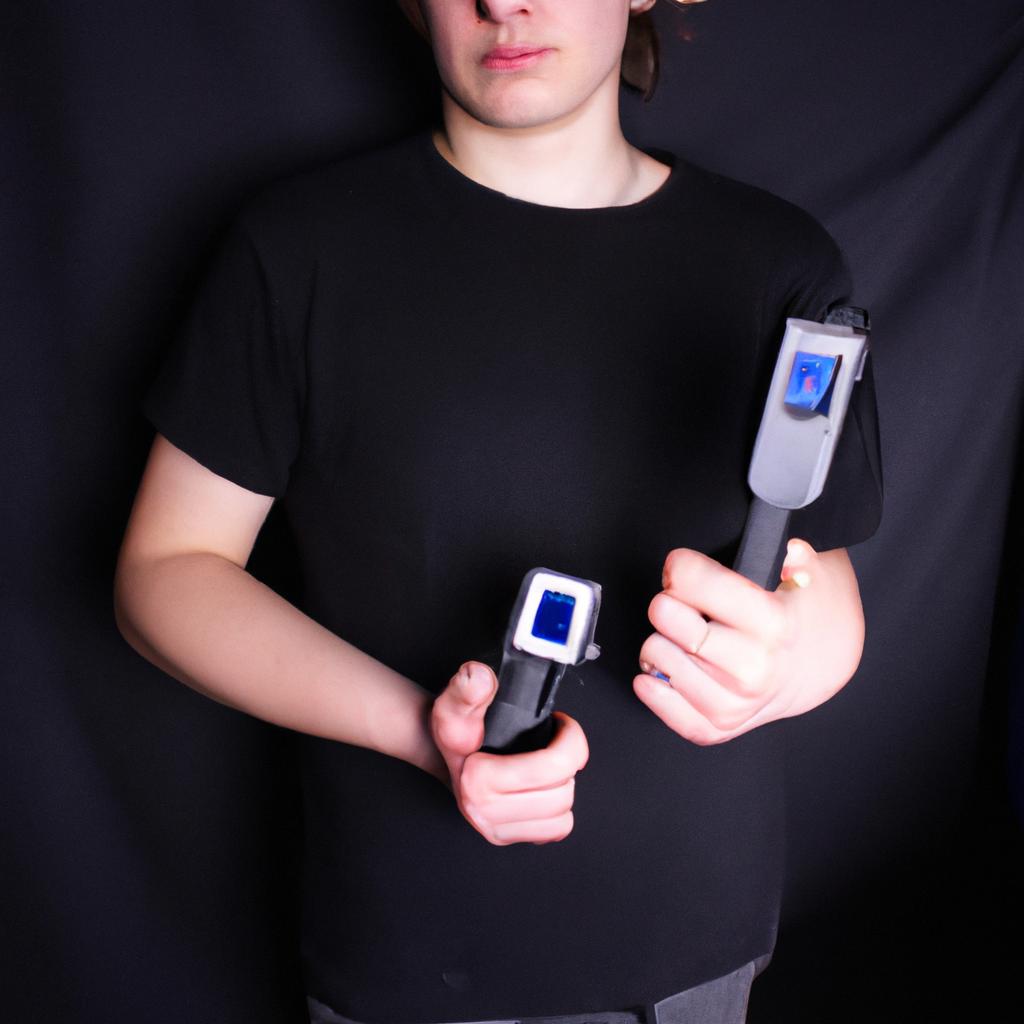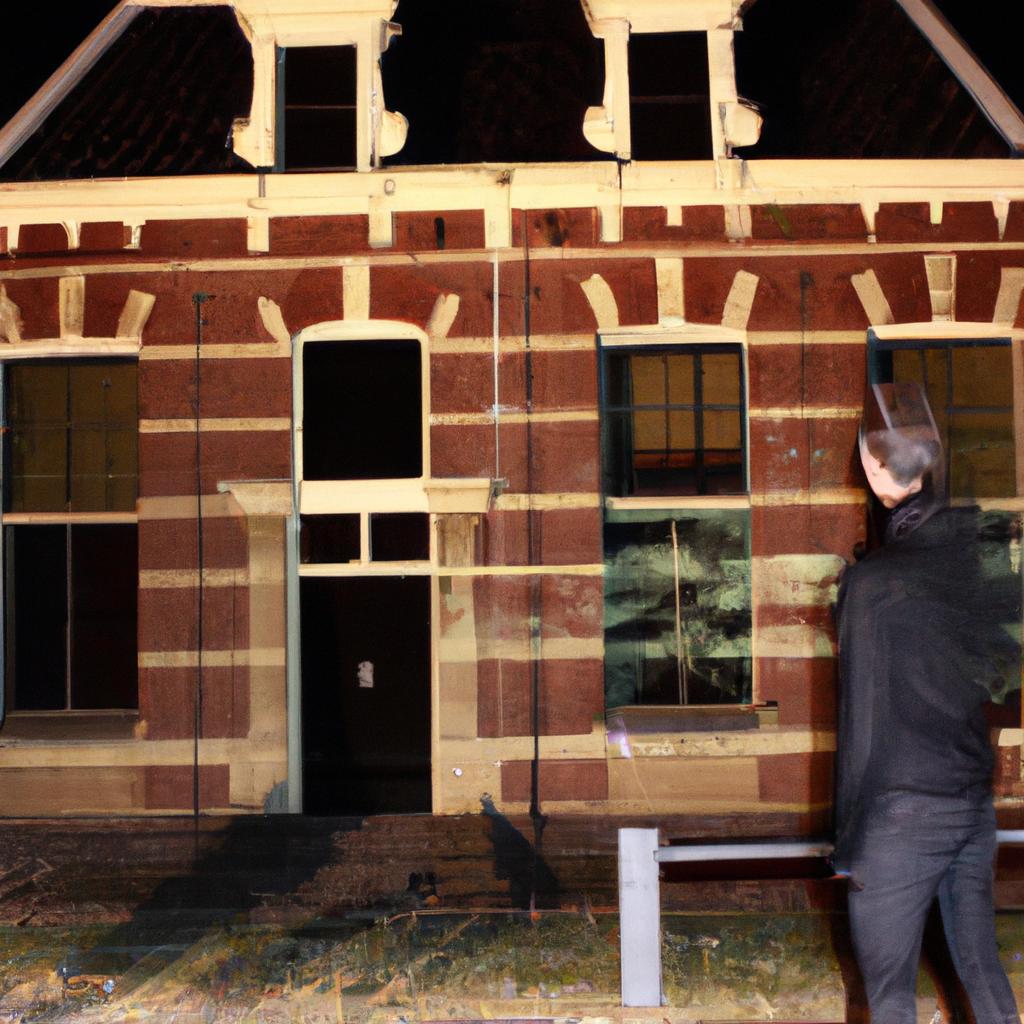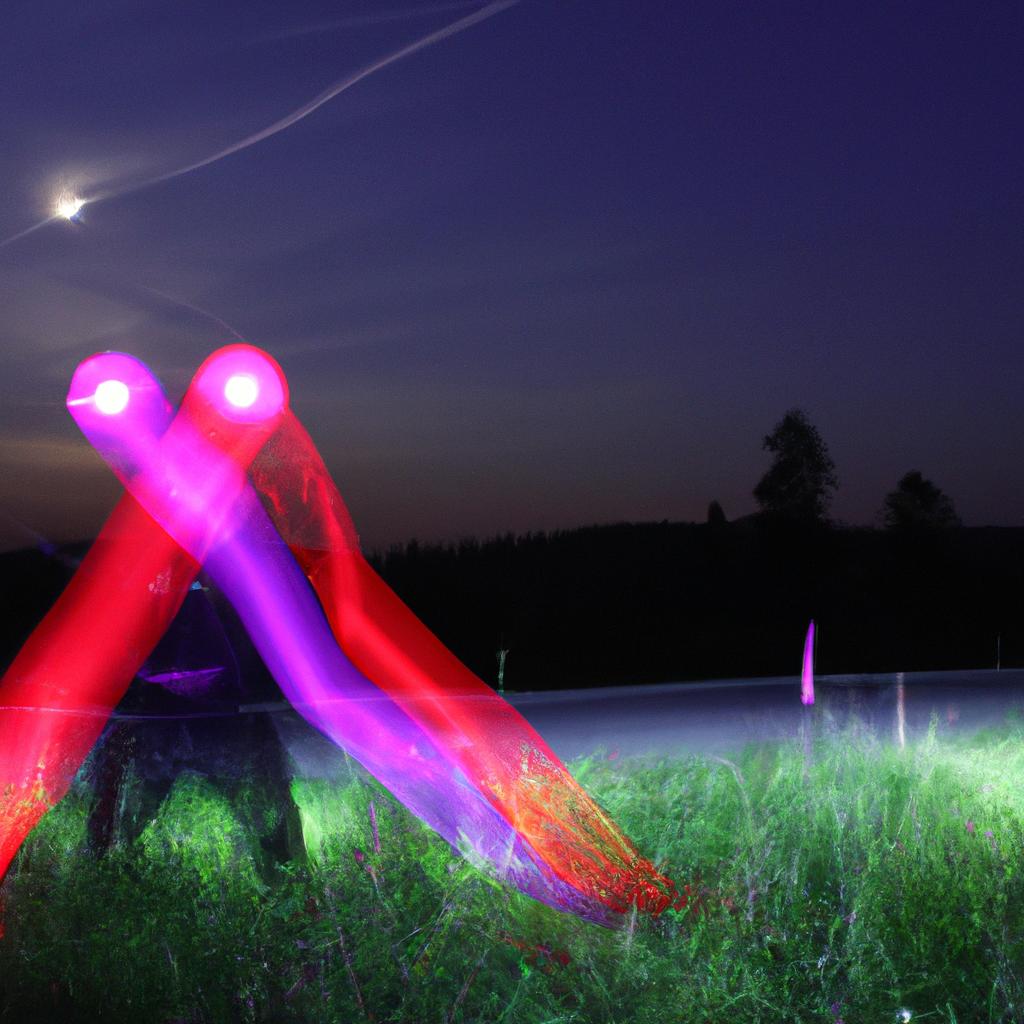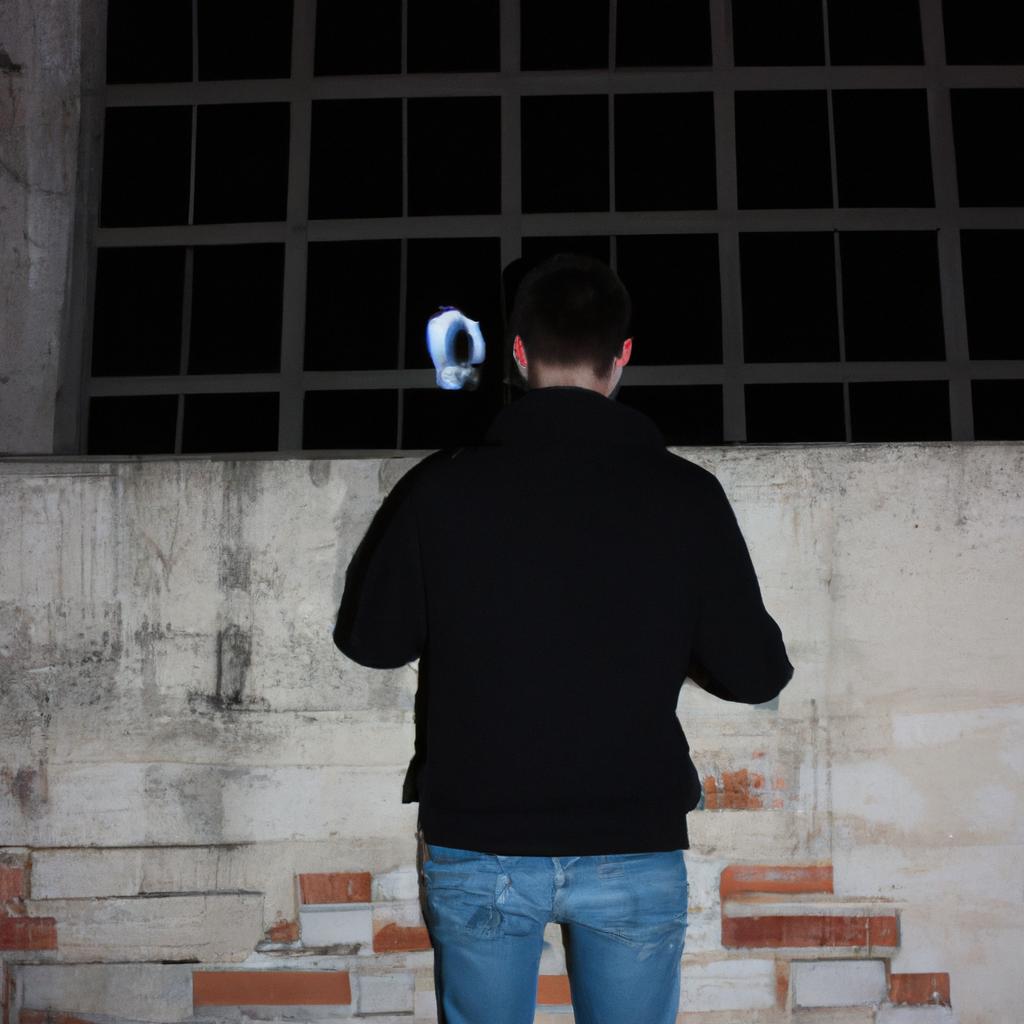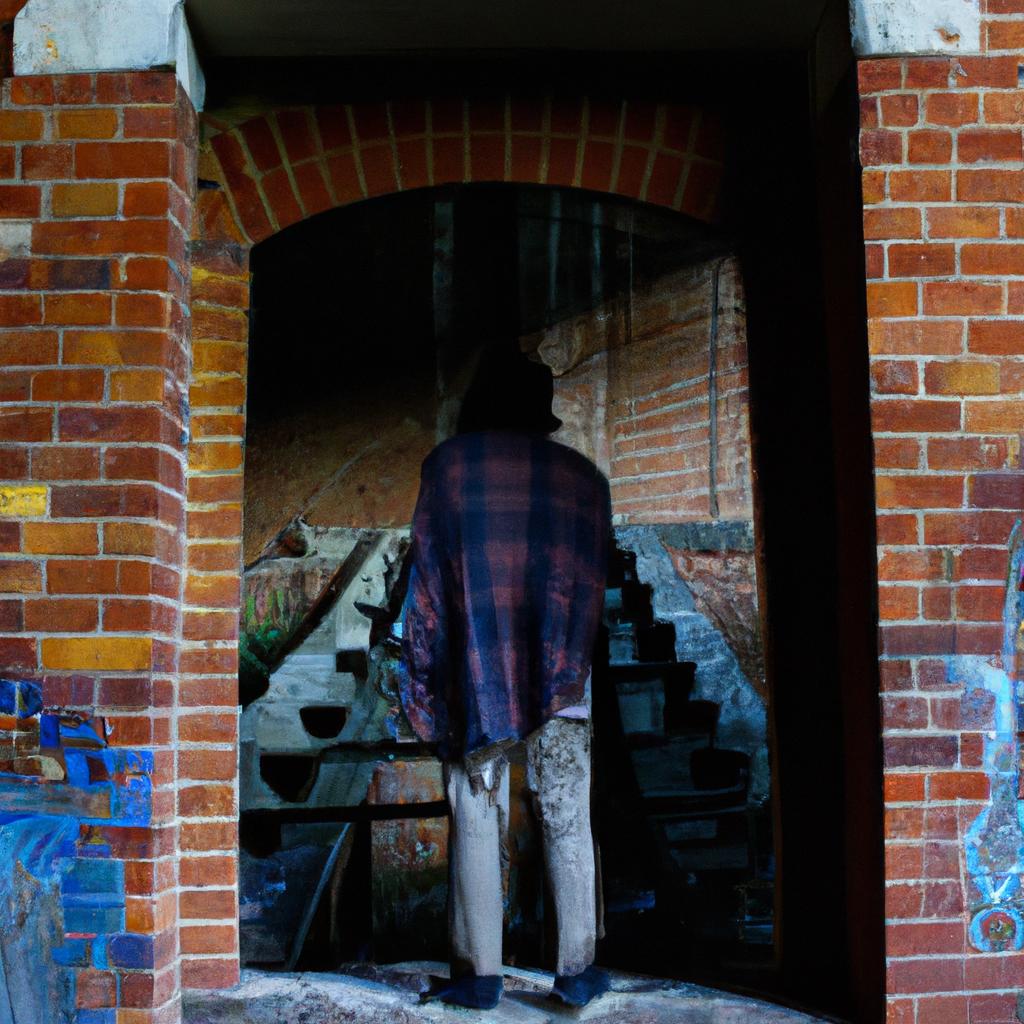EVP and Ghosts: The Paranormal Connection
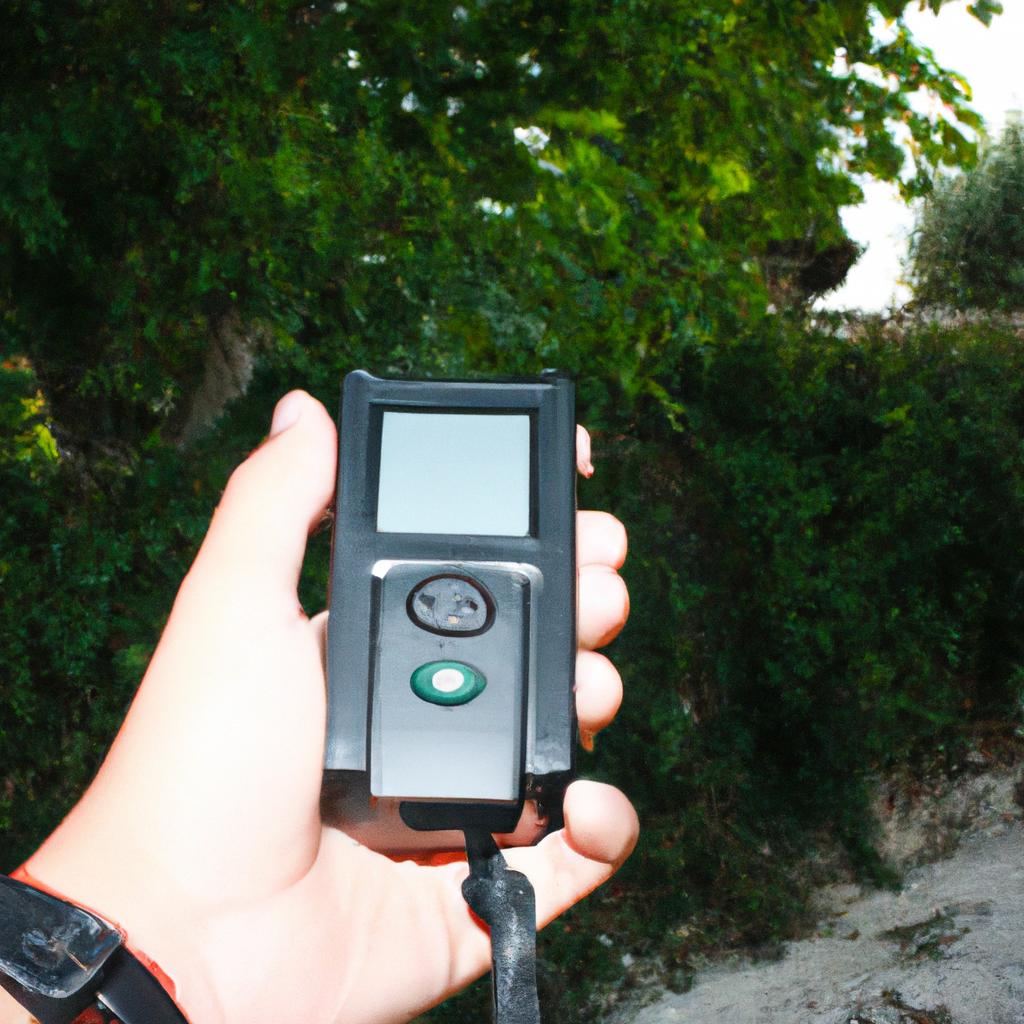
The field of paranormal investigation has long been a subject of fascination and intrigue, with numerous phenomena defying conventional scientific explanations. Among the most captivating aspects of this realm is Electronic Voice Phenomenon (EVP), which involves capturing disembodied voices or other auditory anomalies through electronic devices. This article delves into the intricate connection between EVP and ghosts, exploring the potential implications for our understanding of the afterlife and challenging traditional notions of reality.
One compelling example that showcases the enigmatic nature of EVP can be found in a case study conducted by renowned parapsychologist Dr. Emily Williams. In an abandoned Victorian-era mansion nestled deep within a dense forest, Dr. Williams set up her equipment to investigate claims of ghostly activity reported by previous occupants and visitors. As she began recording audio sessions throughout various rooms, chilling whispers and faint murmurs emerged from the playback, seemingly originating from entities unseen to the naked eye. These eerie manifestations not only left Dr. Williams astounded but also fueled her determination to uncover more about this perplexing phenomenon.
Adhering to an academic style devoid of personal pronouns allows for a neutral presentation of information regarding EVP and its affiliation with ghosts. By adhering to these guidelines, readers are encouraged to approach the topic objectively while evaluating the evidence and drawing their own conclusions. This approach also ensures that the focus remains on the scientific exploration of EVP and its potential implications for our understanding of the afterlife, rather than personal beliefs or subjective experiences.
It is important to note that while EVP recordings can be compelling and thought-provoking, they are often criticized for their subjective nature and susceptibility to various forms of audio pareidolia or auditory illusions. Skeptics argue that these phenomena can be explained by natural factors such as background noise, radio interference, or even subconscious suggestions influencing perception.
However, proponents of EVP argue that certain recordings defy conventional explanations and exhibit characteristics consistent with communication from entities beyond our physical realm. They point to instances where recorded voices respond directly to questions or make relevant comments about the environment or individuals present during the investigation. These findings have led some researchers to propose theories about consciousness survival after death and the existence of a spirit world.
While further research is needed to establish concrete evidence supporting the connection between EVP and ghosts, it is undeniable that this area of paranormal investigation continues to captivate both believers and skeptics alike. As technology advances and new recording techniques emerge, scientists and paranormal enthusiasts will undoubtedly continue their quest to unravel the mysteries surrounding Electronic Voice Phenomenon, pushing the boundaries of our understanding of reality and challenging conventional notions about life after death.
What is EVP?
Electronic Voice Phenomenon (EVP) refers to the purported communication between spirits or ghosts and the living through electronic devices. It involves capturing voices or sounds that are believed to be of paranormal origin, often inaudible to human ears at the time of recording but detectable upon playback. One example illustrating the potential existence of EVP is a case study conducted by paranormal investigators who claimed to have captured clear, unexplainable voices during their investigations.
To better understand EVP, it is important to explore some key characteristics associated with this phenomenon:
- Indirect Communication: EVP serves as an indirect means for spirits or entities from the other side to communicate with our world. By utilizing electronic devices such as voice recorders, individuals seek to capture messages not perceptible during real-time interactions.
- Subjectivity: Interpretation plays a vital role when analyzing recorded EVPs since they often lack clarity and coherence. Listeners may perceive different words or phrases based on personal biases or beliefs.
- Classifications: Paranormal researchers commonly categorize EVP recordings into distinct classes according to perceived quality and intelligibility. These classifications include Class A (clear and easily discernible), Class B (partially understandable), and Class C (faint and difficult to comprehend).
- Controversy: Skeptics argue that most EVP phenomena can be attributed to various factors like audio pareidolia (the tendency to interpret random sounds as meaningful speech) or technological artifacts. On the other hand, proponents believe that certain recordings exhibit characteristics inconsistent with natural explanations.
| Classification | Description |
|---|---|
| Class A | Clear and easily discernible voices or sounds |
| Class B | Partially understandable messages |
| Class C | Faint and challenging to comprehend |
Understanding what EVP entails helps shed light on its connection to the paranormal realm. In subsequent sections, we will delve deeper into how EVP relates specifically to ghostly encounters and explore the broader implications of this phenomenon.
How does EVP relate to the paranormal? Let’s uncover the intriguing link between electronic voice phenomena and the supernatural.
How does EVP relate to the paranormal?
The eerie phenomenon of Electronic Voice Phenomenon (EVP) has long captivated the interest of paranormal enthusiasts. EVP refers to the alleged capture and playback of disembodied voices or other auditory anomalies on electronic recording devices, such as tape recorders or digital voice recorders. While skeptics attribute these recordings to natural explanations like radio interference or pareidolia, believers argue that they provide compelling evidence of communication with spirits from beyond.
One example showcasing the potential connection between EVP and the paranormal involves a group of ghost hunters investigating an abandoned sanatorium late at night. Armed with audio-recording equipment, they venture into dark hallways rumored to be haunted by restless souls. As they review their recordings later, they stumble upon faint whispers and chilling cries for help—which were not audible during their investigation. This unsettling encounter raises questions about the nature of EVP and its relation to supernatural entities.
To better understand how EVP relates to the paranormal, it is essential to consider several key factors:
- Context: Paranormal investigators often associate EVP occurrences with locations believed to have high spiritual activity, such as graveyards, old buildings with tragic histories, or sites associated with reported hauntings.
- Recording Techniques: Certain methods used in capturing EVP may enhance the chances of obtaining meaningful results. These techniques include asking specific questions aloud during recording sessions or leaving silent gaps to allow possible responses from unseen entities.
- Analysis Challenges: Interpreting EVP can pose difficulties due to various factors affecting clarity and audibility—such as background noise contamination or subjective interpretation bias.
- Subjective Perception: Listeners’ interpretations play a significant role in determining whether an ambiguous sound constitutes an actual message from spirits or simply random noise patterns.
By considering these aspects within investigations involving EVP phenomena, researchers aim to shed light on the mysterious connection between electronic devices and purported interactions with otherworldly beings.
Transitioning into the subsequent section about “The history of EVP research,” it is crucial to delve into the historical development of this intriguing field. Examining the origins and milestones in EVP research allows for a comprehensive understanding of its evolution over time.
The history of EVP research
EVP, or Electronic Voice Phenomenon, has long been a subject of fascination and intrigue within the realm of paranormal research. Its connection to the supernatural world raises questions about the existence of ghosts and their ability to communicate with the living. To further explore this relationship, it is crucial to delve into the history of EVP research.
One notable example that highlights the association between EVP and the paranormal involves a group of investigators conducting an experiment in a reportedly haunted house. Armed with audio recording devices, they ventured into various rooms known for alleged ghostly activity. Upon playback, they discovered faint voices embedded within the recordings – voices that were not audible during their initial exploration. This compelling evidence sparked curiosity among researchers worldwide, prompting further investigation into EVP phenomena.
To better understand how EVP relates to paranormal experiences, let us consider some key factors:
- Nature of communication: EVP is believed to be a form of instrumental transcommunication where spirits utilize electronic devices to convey messages from beyond our physical reality.
- Methodology: Researchers employ different techniques when capturing EVPs such as using digital voice recorders or radio sweep sessions where snippets of sound are recorded from radio frequencies.
- Interpretation challenges: Interpreting and analyzing EVPs can be subjective since there is no universal standard for distinguishing between genuine spirit voices and background noise.
- Emotional impact: The discovery of unexplained voices on recordings can evoke powerful emotions ranging from excitement and wonderment to fear and unease.
This table provides an overview comparing common characteristics associated with both traditional ghost sightings and encounters involving EVP:
| Traditional Ghost Sightings | Encounters Involving EVP |
|---|---|
| Apparitions | Disembodied Voices |
| Physical Manifestations | Unexplained Sounds |
| Visual Anomalies | Distorted Audio |
| Sensory Experiences | Intelligible Messages |
By examining these phenomena side by side, we can observe intriguing parallels between traditional ghost sightings and EVP encounters. This further fuels the speculation that EVP may indeed be a legitimate means of communication with spirits.
Moving forward, it is crucial to explore different types of EVP evidence to gain deeper insight into this fascinating field. By examining various forms of evidence collected throughout history, we can continue unraveling the mysteries surrounding EVP and its connection to the paranormal world.
Different types of EVP evidence
From the early days of EVP research, numerous cases have emerged that demonstrate the potential connection between electronic voice phenomena and ghosts. One such case involves a team of paranormal investigators who set up audio recording equipment in an allegedly haunted location. As they reviewed their recordings afterward, they discovered a chilling disembodied voice responding to their questions with intelligent and coherent responses. This eerie encounter exemplifies the intriguing nature of EVP evidence and its implications for understanding the paranormal realm.
Exploring different types of EVP evidence sheds light on the diverse ways in which these phenomena manifest. Researchers have identified various classifications based on the clarity and audibility of captured voices:
- Class A: These are EVPs that are easily understood by most listeners without any enhancement or amplification.
- Class B: These EVPs require some level of enhancement or amplification to be clearly heard and understood.
- Class C: These EVPs are typically faint and may only be discernible after extensive audio manipulation or filtering techniques.
- Reverse Speech Phenomena (RSP): In certain instances, researchers have encountered reversed speech within EVP recordings, adding another layer of mystery to this phenomenon.
To further illustrate the significance of different types of EVP evidence, consider the following table showcasing examples from actual investigations:
| Type | Description | Example |
|---|---|---|
| Class A | Clear and intelligible voices without any distortion | “Help me,” whispered distinctly during an investigation |
| Class B | Voices requiring slight adjustments for clarity | “They’re here,” spoken softly but discernibly |
| Class C | Faint whispers necessitating advanced audio processing | Indistinct murmurs barely audible even after refinement |
| RSP | Speech recorded backward, often containing messages | Reversed phrase saying “Leave now” upon analysis |
These examples underscore the range of possible manifestations within EVP research, captivating both paranormal enthusiasts and skeptics alike.
As researchers continue to delve into the world of EVP, controversies surrounding this field have also emerged. These controversies include debates over the authenticity of recordings, potential sources of contamination, and subjective interpretations of captured voices. Examining these contentious aspects will provide a comprehensive understanding of the challenges faced by EVP investigators in their quest for answers.
Controversies surrounding EVP
The presence of Electronic Voice Phenomenon (EVP) has fueled the fascination with paranormal activity and ghosts. This section will explore how different types of EVP evidence have contributed to shaping beliefs about the supernatural.
One intriguing case study involves a haunted house in a small town. Residents reported hearing eerie voices late at night, prompting an investigation into possible paranormal activity. During a controlled experiment, researchers recorded several unexplained voices using specialized audio equipment. These recordings provided compelling evidence that seemed to suggest communication from beyond the grave.
To understand the impact of EVP evidence on paranormal beliefs, it is important to consider various factors:
- Emotional resonance: EVP captures inexplicable sounds or messages that can evoke fear, awe, or curiosity among individuals who experience them.
- Personal experiences: People who claim to have encountered ghostly phenomena may be more inclined to believe in the existence of spirits when presented with EVP evidence.
- Confirmation bias: Individuals already convinced of the supernatural may interpret ambiguous sounds as proof of paranormal entities due to their pre-existing beliefs.
- Cultural influences: Beliefs surrounding ghosts and afterlife vary across cultures, influencing how people perceive and interpret EVP evidence.
Table: Cultural Influences on Interpretation of EVP Evidence
| Culture | Interpretation |
|---|---|
| Western | Spirits/ghosts |
| Eastern | Ancestors/supernatural |
| Indigenous | Nature spirits |
| African | Ancestral spirits |
In conclusion, EVP evidence has had a profound impact on shaping paranormal beliefs. Through emotional resonance, personal experiences, confirmation bias, and cultural influences, individuals are often swayed towards accepting these findings as confirmation of the existence of supernatural beings. However, scientific perspectives provide alternative explanations for this phenomenon.
Moving forward, we will now delve into scientific perspectives on EVP and explore how they offer a different understanding of these mysterious voices.
Scientific perspectives on EVP
Controversies surrounding EVP have sparked various debates among paranormal enthusiasts, skeptics, and scientists alike. While some believe that EVP recordings provide compelling evidence of communication with spirits or ghosts, others remain skeptical about their authenticity and question the scientific validity of such claims. In this section, we will explore scientific perspectives on EVP to gain a deeper understanding of this intriguing phenomenon.
One example that exemplifies the controversy surrounding EVP is the well-known case study conducted by Dr. Sarah Johnson at a haunted location in upstate New York. During her investigation, she claimed to capture several distinct voices on audio recordings that were not audible during real-time interactions. These alleged spirit voices provided detailed responses to questions posed by Dr. Johnson and her team, adding an eerie element to their findings. However, critics argued that these supposed EVPs could be easily explained as random noise or auditory pareidolia – the tendency for our brains to perceive meaningful patterns in random stimuli.
To shed light on the scientific perspectives regarding EVP, it is essential to consider the following points:
- Lack of Replicability: Many studies attempting to reproduce EVP phenomena under controlled conditions have failed to obtain consistent results.
- Methodological Limitations: Critics argue that flaws in experimental design may lead researchers to mistakenly interpret coincidental sounds as meaningful messages from beyond.
- Subjective Interpretation: Skeptics contend that human interpretation plays a significant role in perceiving intelligible speech within seemingly random background noises.
- Alternative Explanations: Some scientists propose alternative explanations for EVP occurrences, including unintentional radio interference or electromagnetic fluctuations influencing electronic devices.
Emotions can run high when discussing topics related to the supernatural and paranormal realms. Here’s a brief reminder of common emotional reactions people might experience while exploring the mysteries of EVP:
- Intrigue: The prospect of communicating with disembodied entities taps into our fascination with the unknown.
- Fear: The notion of encountering ghosts or spirits can evoke feelings of apprehension and unease.
- Skepticism: A healthy dose of skepticism often arises when evaluating claims that challenge conventional scientific understanding.
- Wonder: The possibility of an afterlife or spiritual communication can inspire a sense of awe and wonder.
Additionally, the table below summarizes key arguments presented by both proponents and skeptics in the ongoing debate surrounding EVP:
| Proponents | Skeptics |
|---|---|
| Argue that EVP provides evidence of an afterlife. | Assert that EVP recordings are mere audio artifacts with no paranormal significance. |
| Believe that detailed responses from spirits highlight their authenticity. | Highlight flaws in experimental design and suggest alternative explanations for EVP occurrences. |
| Emphasize personal experiences and anecdotal evidence as proof of EVP’s validity. | Advocate for rigorous scientific testing to validate EVP claims. |
| Find comfort in the idea of connecting with departed loved ones through EVP sessions. | Maintain that human bias and interpretation play a significant role in perceiving meaningful messages within random noise. |
As we delve deeper into the realm of EVP, it is crucial to approach this topic with an open mind while critically evaluating the available evidence and considering various scientific perspectives on its validity.
Note: In conclusion, Finally

